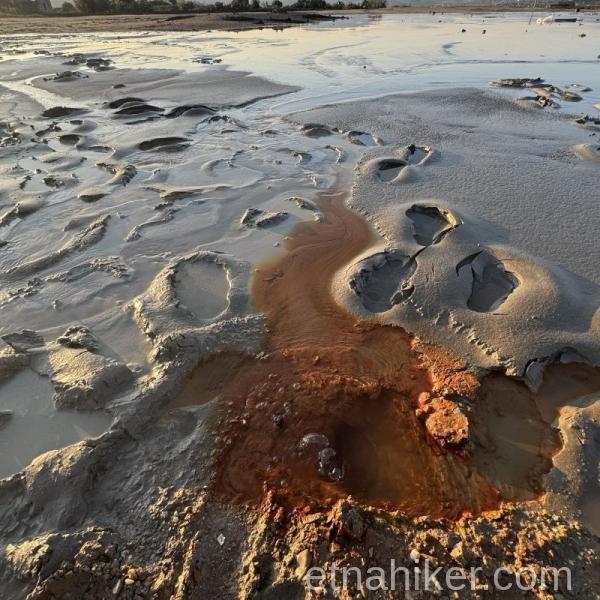The Salinelle di Paternò are a unique geological site in Europe. Extremely interesting because they are linked to the internal activity of Etna and a striking expression of the dynamism of the Etna area. They can tell us whether the volcano is preparing something or not, as if to say something is cooking, and above all they represent a natural spectacle that leaves you spellbound, a developing tourist attraction.
It is still volcanic activity, which consists only of gas emissions that mix with the water and clay present in the subsoil, forming these boiling pools that on some occasions can become more violent.
These are brackish and muddy waters with a continuous bubbling of gas in the center. This gas is mostly carbon dioxide that has a very deep origin. It is a magmatic gas that comes from a deeper reservoir of Etna, located almost at the level of the mantle. This carbon dioxide rising towards the surface meets a more superficial gas of an organic type which is methane. The connection of these two gases produces this wonderful activity with the emission of very salty waters.
The salinity of these waters is much higher than that of sea water, but they are not old sea waters, they are waters that have a double origin and are formed both by condensation of deep magmatic fluids rich in salt called brine, and by waters that take salt from the clays that make up the substrate of the territory.The clay emitted is a blue marsa clay that has a formation age of about 20 million years that is mobilized and brought to the surface. The water is hot and has an average temperature of about 40 degrees, a heat that comes from the depths of the volcano, and that as this varies, there generally corresponds to an increase in eruptive activity, as for example recorded during the paroxysmal phase of 2020/2022.
These variations also indicate that great gas pressure has accumulated in the depths of the volcano, and that new magma will probably be erupted in a short time.If we can so to speak make a sort of prediction for the future, a precursor to always take with a pinch of salt of course, it means that, when an increase in activity is recorded at the Salinelle, it is likely that in the coming months there could be an increase in the volcano's activity.Historically, from what is known from the literature of 1800, various scholars such as Gemellaro, Ponte and Silvestri have visited, studied and monitored this site, also reporting temperature values of 50 degrees.
This would demonstrate that the deep reservoir of the salinelle is located about 1 km of crust and by some estimates has a temperature of around 120 140 degrees.The salinelle also represent an important geothermal resource, and one could also imagine an exploitation of the territory.But the site is preserved and protected, and the uniqueness of the salinelle lies in the fact that here there is also the volcano that, so to speak, provides the "propellant", the gas. The other mud volcanoes around the world are powered exclusively by methane gas and do not have volcanic origins and therefore they run out when these pockets of hydrocarbon gas run out. Here, as long as Etna is there, the eruptive activity of our salt pans will be present.
Photos of Salinelle







